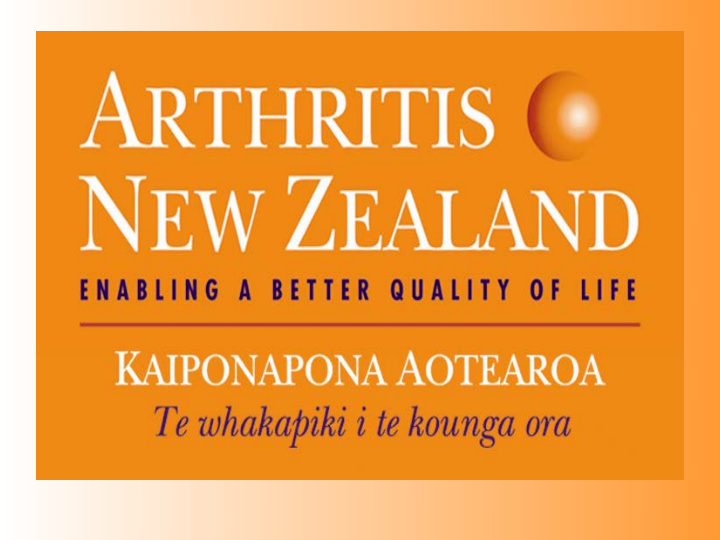



Osteoarthritis (OA)
OA • Osteoarthritis is a poor name for degenerative joint disease. Articular cartilage is involved more than bone, and inflammation is secondary to the disease, not the cause. • ‘Osteoarthrosis’ is sometimes used as an alternative, and ‘Osteochondrosis’ would be more accurate. • Dandy. D.J.(1989)
Classifying OA • Primary OA – no clear-cut cause (although there are well-known risk factors) • Secondary OA – Known cause For example Trauma Skeletal abnormalities Inflammatory arthritis Metabolic causes (eg Acromegaly, CPPD, Haemochromatosis)
Risk factors for primary OA • Obesity • There is a hereditary influence on some forms of OA, especially hand and knee OA in women, the genetic basis of this is yet to be discovered. • Occupation (OA in hips in farmers, midfoot joint OA in ballet dancers, finger OA in rock climbers) • Women with osteoporosis have a lower risk of developing OA and vice versa. • (Stein,M. & Taylor,G. 2004)
Symptoms of OA • Pain • Stiffness • Joint swelling • Altered function
Conservative treatment for OA • Explanation of the condition and reassurance (widespread and severe OA can be disabling, but it is fairly uncommon) • Advice to be active, but to modify activities to protect the joints. • Assistive aids • Physiotherapy • Drug therapy (Analgesics, NSAIDs, Steroid injections) • Complementary therapies • Weight loss (if overweight) • Heat and cold
Surgical treatment of OA • Debridement If osteophytes seriously obstruct joint movement, or are unsightly, it is possible to remove them. They can recur, however. • Arthrodesis, the fusion of the joint, converts a stiff, painful joint in a bad position, to a stiff, painless joint in a good position. It should only be performed if the neighbouring joints are healthy and have a good range of movement. The joint should be fixed in the most functional position. • Osteotomy can correct deformity and alters the architecture at the site of healing, allowing for some remodelling. The operation can be painful, can require a long period of rehabilitation, and the symptoms can recur. In its favour, the operation does not destroy the joint irreparably. • Joint replacement surgery can give remarkable results. But infection is a possibility and can be catastrophic. The prosthesis can also fail or become loose, usually requiring further surgery.
References • Dandy,D.J. 1989 Essential Orthopaedics and Trauma. Churchill Livingstone , Edinburgh • Stein,M. & Taylor,G. 2004. The Encylopedia of Arthritis. Facts on File, New York
Questions …… ?
Recommend
More recommend